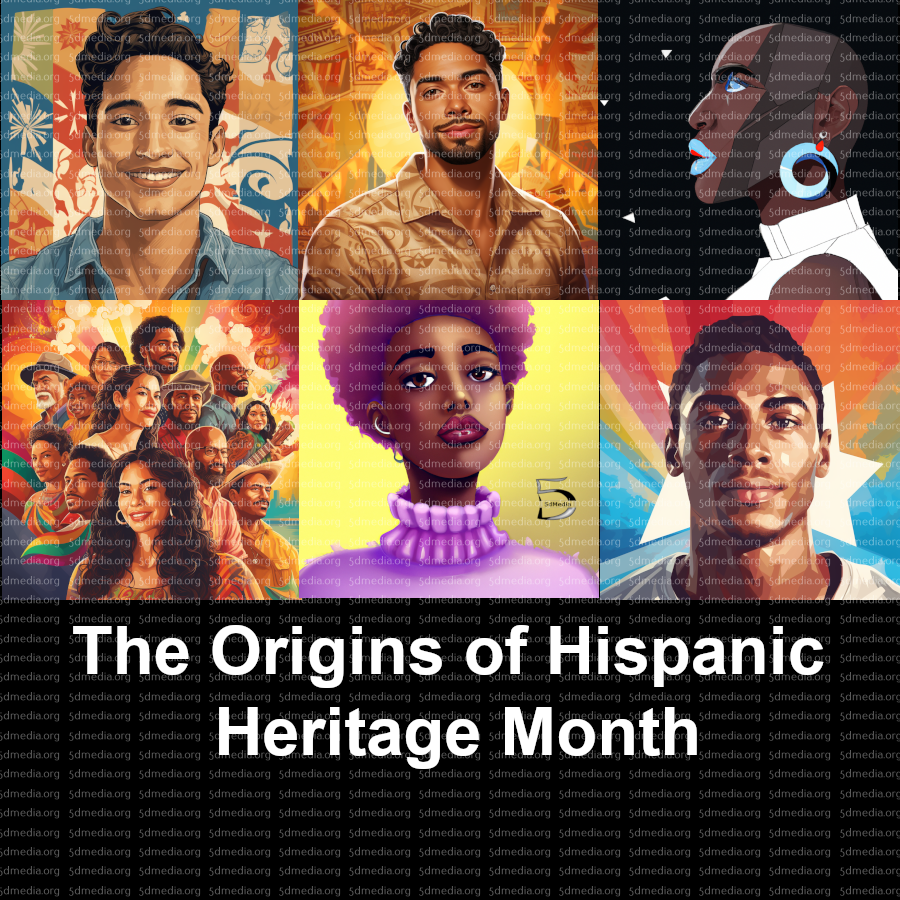Exploring the Roots of Hispanic Heritage Month: A Deep Dive into the Historical Events and Influential Figures that Sparked this Celebratory Tradition
Hispanic Heritage Month, observed from September 15th to October 15th, is a time to celebrate the rich and diverse contributions of Hispanic and Latinx individuals to American society. This month-long celebration is an opportunity to delve into the historical events and influential figures that have shaped the Hispanic community’s identity and cultural heritage. By exploring the roots of Hispanic Heritage Month, we can gain a deeper understanding of the struggles, triumphs, and resilience of this vibrant community.
The Origins of Hispanic Heritage Month
Hispanic Heritage Month was first established as a week-long celebration in 1968 by President Lyndon B. Johnson. At the time, it was known as Hispanic Heritage Week and was celebrated in the week that included September 15th and 16th. These dates were chosen because they coincide with the independence days of several Latin American countries, including Costa Rica, El Salvador, Guatemala, Honduras, and Nicaragua.
In 1988, President Ronald Reagan expanded the celebration to a month-long observance, starting on September 15th and ending on October 15th. This expansion allowed for a more comprehensive exploration of the contributions and achievements of Hispanic and Latinx individuals throughout history.
The Significance of September 15th
September 15th holds great significance for the Hispanic community as it marks the anniversary of the independence of several Latin American countries. On this day in 1821, Costa Rica, El Salvador, Guatemala, Honduras, and Nicaragua all declared their independence from Spanish colonial rule. Additionally, Mexico celebrates its independence on September 16th, and Chile on September 18th.
By choosing September 15th as the starting point for Hispanic Heritage Month, the celebration not only honors the heritage of these countries but also recognizes the shared history and cultural ties that bind the Hispanic community together.
Celebrating Hispanic and Latinx Culture
Hispanic Heritage Month is a time to celebrate the diverse cultures, traditions, and contributions of Hispanic and Latinx individuals. From art and music to literature and cuisine, the Hispanic community has made significant contributions to the cultural fabric of the United States.
One of the most notable contributions is in the field of music. Latinx artists have had a profound impact on various genres, including salsa, merengue, reggaeton, and Latin pop. From the iconic rhythms of Tito Puente and Celia Cruz to the modern sounds of Shakira and J Balvin, Latinx musicians have brought their unique styles and flavors to the global stage.
In the world of literature, Hispanic and Latinx authors have enriched the literary landscape with their powerful storytelling and unique perspectives. Writers such as Gabriel Garcia Marquez, Isabel Allende, and Junot Diaz have captivated readers with their evocative narratives, exploring themes of identity, love, and social justice.
Influential Figures in Hispanic History
Hispanic Heritage Month provides an opportunity to highlight the achievements of influential figures who have shaped history and paved the way for future generations. From civil rights activists to groundbreaking scientists, Hispanic and Latinx individuals have made significant contributions in various fields.
One such figure is Cesar Chavez, a Mexican-American labor leader and civil rights activist. Chavez co-founded the National Farm Workers Association, which later became the United Farm Workers (UFW) union. Through nonviolent protests and strikes, Chavez fought for the rights of farmworkers, advocating for fair wages and better working conditions.
Another influential figure is Dolores Huerta, a labor leader and civil rights activist who co-founded the United Farm Workers union alongside Cesar Chavez. Huerta played a pivotal role in organizing and mobilizing farmworkers, fighting for their rights and empowering marginalized communities.
In the world of science, Dr. Ellen Ochoa stands as a trailblazer. She became the first Hispanic woman to go to space when she served as a mission specialist aboard the space shuttle Discovery in 1993. Dr. Ochoa’s achievements not only broke barriers but also inspired future generations of Hispanic and Latinx individuals to pursue careers in STEM fields.
Embracing Diversity and Inclusion
Hispanic Heritage Month serves as a reminder of the importance of embracing diversity and inclusion. It is a time to recognize and appreciate the contributions of Hispanic and Latinx individuals, while also acknowledging the challenges they have faced and continue to face.
By celebrating Hispanic Heritage Month, we can foster a greater understanding and appreciation for the rich tapestry of cultures that make up the Hispanic community. It is an opportunity to learn from one another, break down stereotypes, and build bridges of understanding and unity.
As we delve into the historical events and influential figures that sparked this celebratory tradition, let us remember that Hispanic Heritage Month is not just a time to celebrate, but also a time to reflect, educate, and advocate for a more inclusive society.
Conclusion
Hispanic Heritage Month is a time to honor the contributions, achievements, and resilience of the Hispanic and Latinx community. By exploring the roots of this celebratory tradition, we gain a deeper understanding of the historical events and influential figures that have shaped Hispanic culture and identity.
As we celebrate Hispanic Heritage Month, let us embrace diversity and inclusion, recognizing the rich tapestry of cultures that make up the Hispanic community. Through education, reflection, and advocacy, we can work towards a more inclusive society that values and uplifts all voices.
Join us in celebrating Hispanic Heritage Month and embark on a journey of discovery, appreciation, and unity. Together, let us honor the past, celebrate the present, and shape a brighter future for all.


